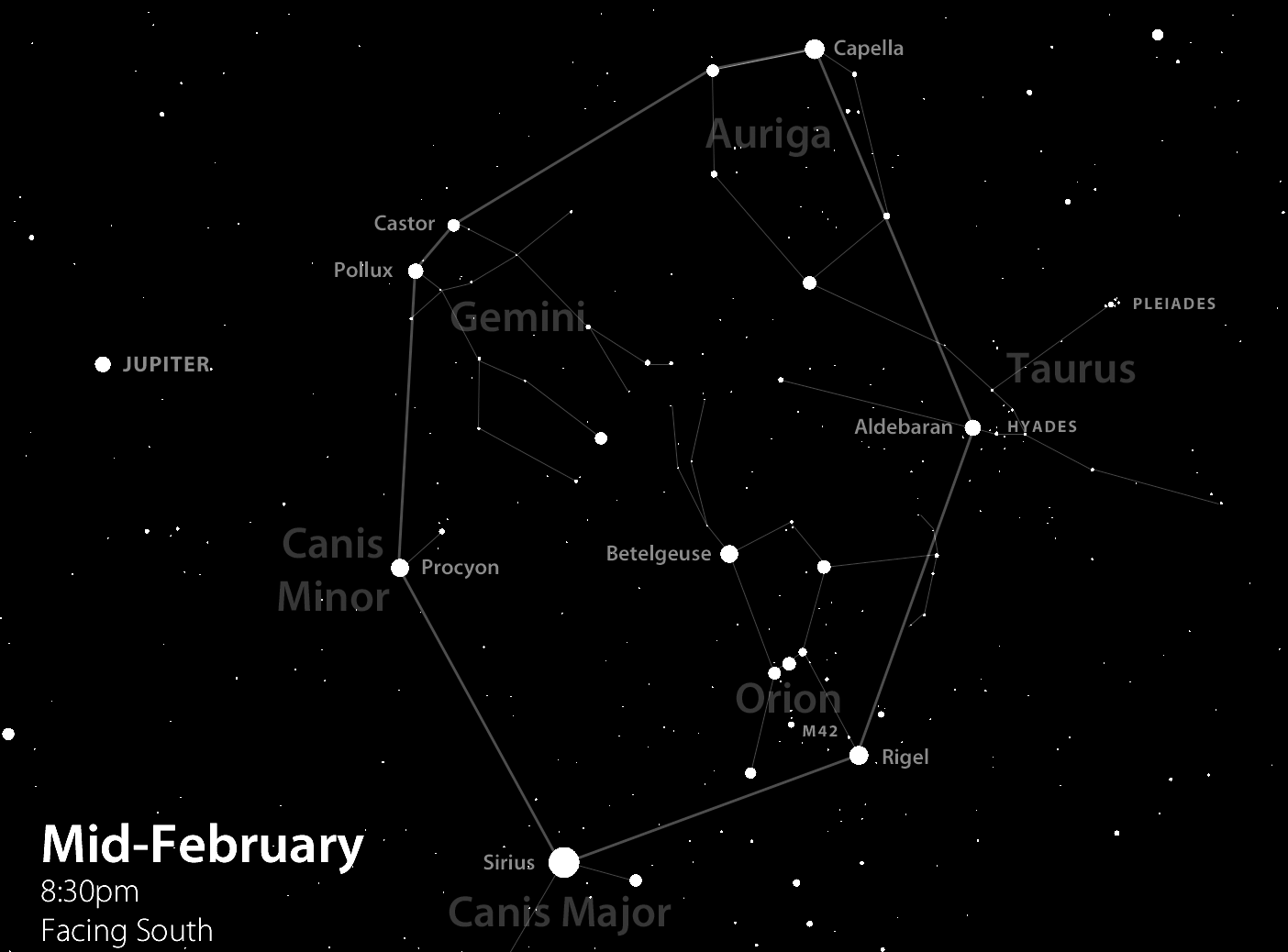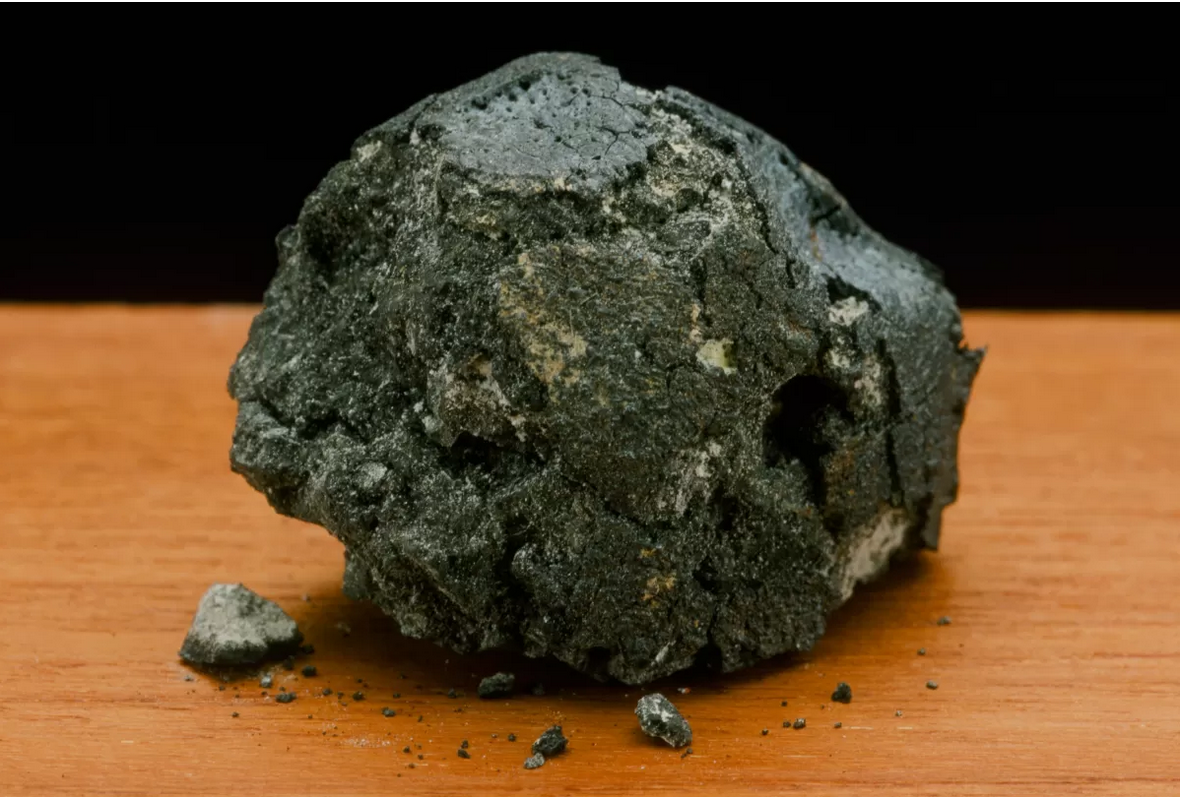Stargazing
How to Stargaze
Stargazing is a simple hobby, but hard to know how to get started on. But once you're in the habit it can be relaxing to go outside for a few moments in the night and identify constellations. If you want to start stargazing, the first thing to do is to find out what hemisphere of the sky you live under- if you live above the equator you live in the northern hemisphere, and if you live below you live in the southern hemisphere.
Northern Hemisphere
Ursa Major and Minor: The most recognizable constellations in the northern hemisphere are the big and little dipper, also know as Ursa Major and Minor. These constellations are found in the north, with the star in the end of the handle of the little big dipper being Polaris-the star that marks true north.

Southern Hemisphere
Hydra: The largest constellation in the sky, located south of the constellation Cancer and by extension the entire zodiac belt. Its main star is the orange star Alpharad

The Winter Circle
The winter circle is a easily recognizable asterism (collection of constellations and stars) that can best be seen in the Northern hemisphere in the winter, and in the summer for the Southern hemisphere (called the summer circle there).
Where to find it: It is visible everywhere on Earth except south of New Zealand's South island, Chile, and Argentina. The circle is best seen in the Northern hemisphere from December through March, and in the Southern hemisphere from July to November. In the Southern hemisphere, following the star Canopus out of the constellation Carina will lead to finding the star Sirius, part of the winter circle.
The winter circle contains six constellations, three of which form the smaller asterism the winter triangle. Starting from the bottom left section of the circle and working through the constellations clockwise:
- Canis Major Known for it's brightest star, Sirius, which forms the winter triangle with Betelguese and Rigel. One of the two dogs that follow after Orion the hunter.
- Canis Minor Located above Canis Major, its brightest star is Procyon. The second dog that follows Orion.
- Gemini, the twins Located above Canis Minor, on the Milky Way, and in the Zodiac Belt. Comprised of two stars, Pollux and Castor.
- Auriga The top of the winter circle. Comprised of a pentagon of stars, with the peak being Capella. Shares the orange star Aldebaran with the constellation Taurus
- Taurus, the bull Located underneath Auriga and in the zodiac belt. The center star Aldebaran forms the eye of the bull. If you draw a line from the star Betelguese to Aldebaran, and extend it outwards, you will find the star cluster of the Pleiades
- Orion, the hunter The most notable of the winter circle constellations, with a center formation of three stars in a row forming a 'belt', the red star Betelguese above, and the star Rigel below.

Source: The Skyscrapers INC. 2015
8/9/23: Perseid Meteor Shower!
Breaking News! This week, the perseid meteor shower happens! It's already happening now, but it will reach its peak from saturday night to sunday morning. “If you’ve got nice clear weather and a good dark sky, you go out just before dawn and you’ll see a Perseid per minute or so,” said NASA meteor scientist Bill Cooke. “That’s a pretty good show.”[Burakoff 2023]. The Perseid happens every year in late summer, when the earth's path comes through the path of the Swift-Tuttle comet and lets ice and space rock fall into the atmosphere. It is called the Perseid meteors because the meteors seem to originate from the Perseius constellation, but the shower can be seen from anywhere. Don't miss out, or you'll have to wait until next year!
UFOS!
The subject of extraterrestrial life has been the subject for speculation for generations. If it exists, if aliens have visited the earth, if the government is covering them up. But while the terms 'aliens' and 'ufos' may be interchangable in popular culture, they refer to two different phenomena. A UFO [Unidentified Flying Object] is just that: an undentified object in the sky. It may turn out to be aliens, but it could be anything; a weather balloon, a strange bird, a spy drone. And the possibility of it being a spy drone is what has caused endless conspiracies and headaches for the government.
Alien Espionage
Put simply, in the cold war the government became concerned about soviet spy drones and other espionage technology. Asa result, when a UFO was reported, the investigation was heavily classified. The high level of secrecy surrounding the UFOs made people think that the government was covering something up, which they were, but their minds jumped to aliens and strange creatures from outer space instead of the current political climate. This feedback loop is deeply covered in "The UFO Files" by Dr David Clarke, which he wrote using the files released by the United Kingdom's National Archives in 2013. You can almost imagine the frustration of the Ministry of Defense UFO desk as they try to explain to panicked civilians that the strange lights they saw in the sky were not aliens while also not giving away that they were military tests.
Extraterrestrial materials

Orgueil Meteorite from the Smithsonian Meteorite Collection
-It came from outer space- The most common thing that comes from outer space are meteorites, cast off from passing comets and asteroids. You might have even seen one walking through the woods and not have known, because meteors tend to burn up and become radically small in the earth's atmosphere. But if a meteor looks like a regular earth rock, how could anyone tell it's from outer space? By using the chemical composition of the meteorite! Space is full of isotopes of elements (elemental molecules with a varying amount of netrons) that don't commonly occur on earth, including the remnants of decayed radionuclides. Radionuclides are atoms with excessive amounts of nuclear energy, formed in supernovae. The strange energy particles tell astronomers about rare astronomical events too far away to get the chemical reactions of firsthand. The presence of unearthly isotopes in the meteorite allows researchers to determine true extraterrestrial objects from hoaxes and false alarms.